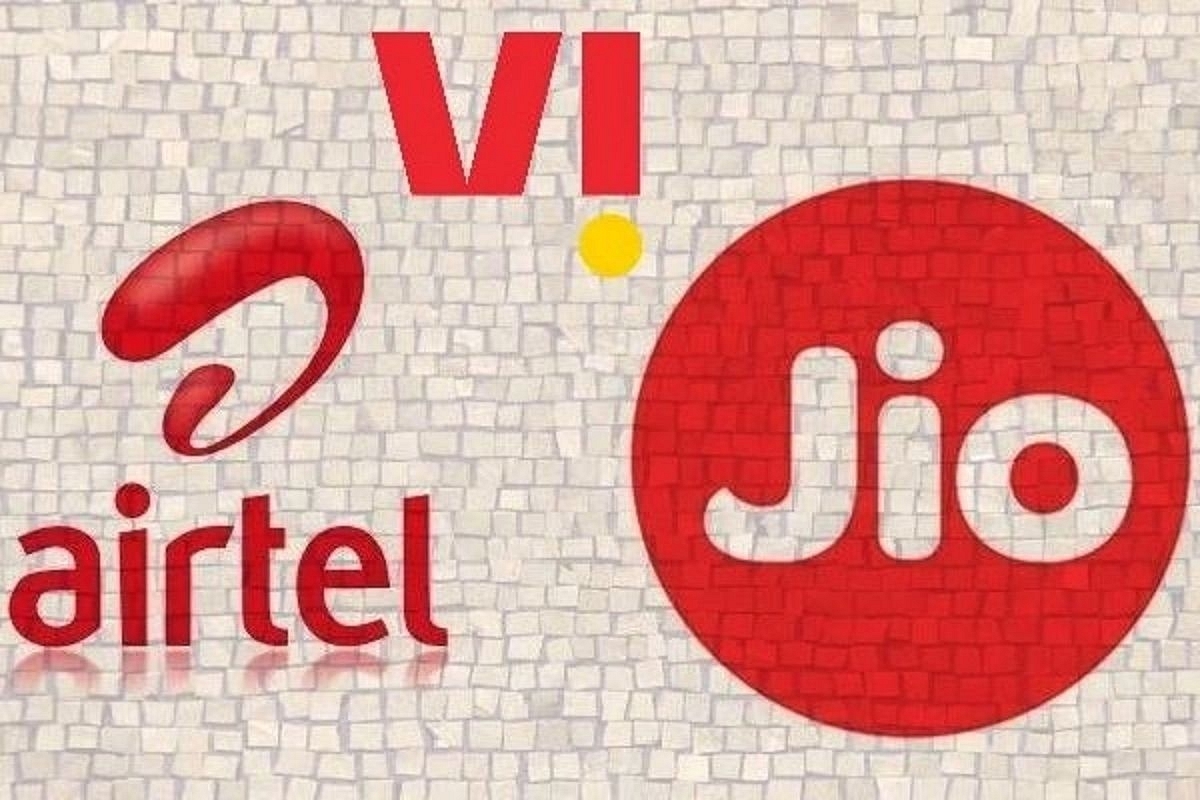Business
5G Strategy: Jio Goes For Overkill, Airtel For Smart Play, Vodafone For Defence
- The successful auction of airwaves in India shows that a transparent spectrum allocation policy can work wonders, especially if the base prices are not extortionate.

Logos of India's telcos - Airtel, Jio and Vodafone Idea.
India’s most successful auction of airwaves to date, which ended yesterday (1 August) with 71 per cent of the spectrum being sold against bids amounting to over Rs 1.5 lakh crore, marks a turning point for India’s telecom sector. It shows that a transparent spectrum allocation policy can work wonders, especially if the base prices are not extortionate. It puts Telecom Minister Ashwini Vaishnaw in the same reformist league as Arun Shourie, the man who single-handedly rescued an unviable policy from extinction in the early 2000s during the Atal Bihari Vajpayee government.
At the end of the auction, Reliance Jio ended up with over 24,740 Mhz of spectrum, Airtel with 19,867 Mhz and Vodafone with 6,228 Mhz by paying Rs 88,078 crore, Rs 43,084 crore and Rs 18,799 crore respectively. The Adanis got 400 Mhz of spectrum for Rs 212 crore for captive use. The money will be received by the exchequer over 20 years, with Rs 13,000-plus crore coming in this year.
India is on the road to a fast rollout of 5G services, for it makes no sense to buy so much spectrum and sit on it. Vaishnaw said that he expected 5G services to be rolled out in phases from October, with spectrum allocations being finished over the next two weeks.
The high bids, most of which involved buying spectrum in the 3.3 Ghz (C-band) and 26 GHz bands, will enable both coverage and capacity needs when 5G demand materialises. What was interesting, though, was Jio’s bid for nation-wide spectrum capacity in the 700 Mhz band, which will help with rural coverage and also urban coverage in highly built-up areas.
Also interesting was the competitive bidding for 1800 Mhz band in Uttar Pradesh (East), which has some of the poorest people in India and the largest subscriber base. The bidding went on for more than the expected two days because both Airtel and Jio competed for the small quantity of 1800 Mhz spectrum offered here.
The bidding results indicate what the likely strategies of the two main competitors will be, as also of the third player, Vodafone.
The Jio bids, paying twice as much as Airtel, show that its strategy is to expand both revenue and subscriber market shares. It is going for saturation and domination.
The Airtel bid suggests that cost-effective capture of available initial 5G demand is the best way forward, with additional spectrum being bought later in the yearly auctions, when needed. This is shrewd, for even though 5G demand exists, no one can be sure how fast it will spread from the big metros to the suburbs and smaller towns.
The Vodafone bids show a defensive effort to retain existing market share and customers at minimal expense. It has acquired spectrum in the 3.3 Ghz and 26Ghz bands in 17 and 16 “priority” circles at minimum cost. It wants to stay in the game.
The Adani bid is about testing the waters with a small investment in 5G services for captive purposes, with the option of going in more later. One cannot rule out an entry into commercial services later, if the market proves to be viable and the group spots a gap in the market where it can make a difference. For now, the group has said it is in the game only for captive use.
The fifth player, Bharat Sanchar Nigam Limited, will get spectrum at the prices that the private players bid for. In the immediate future, though, its focus will be on expanding the 4G network by using the four-year, Rs 1.64 lakh crore rescue package from the government.
But warts and all, Indian telecom is back.
Support Swarajya's 50 Ground Reports Project & Sponsor A Story
Every general election Swarajya does a 50 ground reports project.
Aimed only at serious readers and those who appreciate the nuances of political undercurrents, the project provides a sense of India's electoral landscape. As you know, these reports are produced after considerable investment of travel, time and effort on the ground.
This time too we've kicked off the project in style and have covered over 30 constituencies already. If you're someone who appreciates such work and have enjoyed our coverage please consider sponsoring a ground report for just Rs 2999 to Rs 19,999 - it goes a long way in helping us produce more quality reportage.
You can also back this project by becoming a subscriber for as little as Rs 999 - so do click on this links and choose a plan that suits you and back us.
Click below to contribute.
Latest